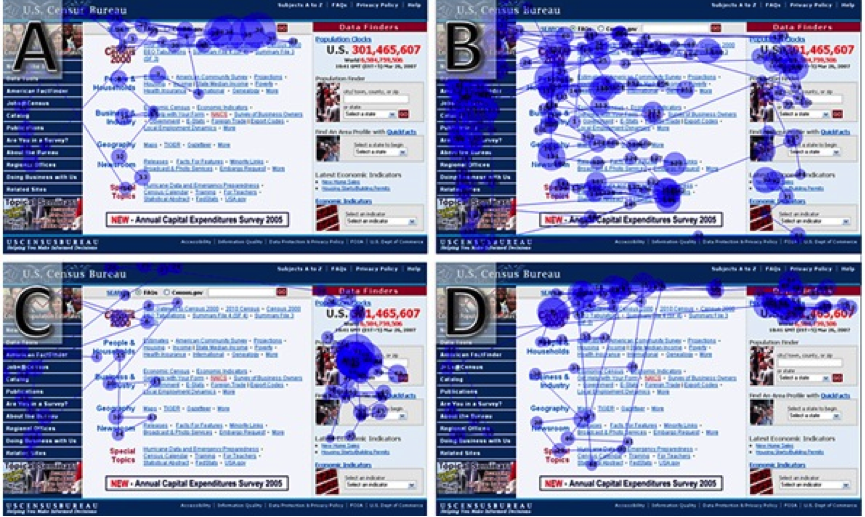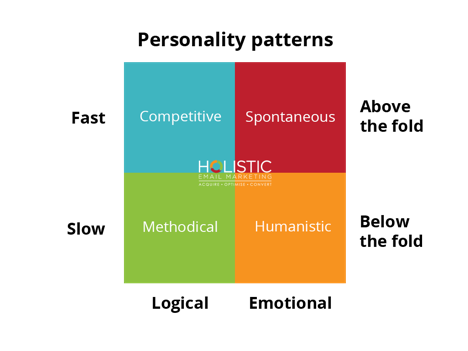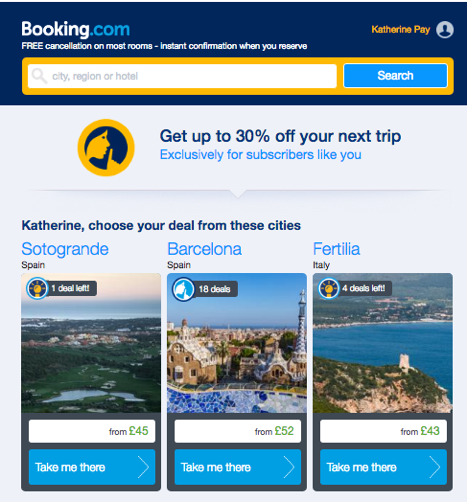Tackle Inactives by Designing for Their Buyer Personalities
We talk a lot about how to wake up inactive subscribers and customers, but none of the usual strategies and tactics tackle one of the root causes: Your email's personality doesn't appeal to most of your subscribers.
Here's what I mean: Your emails might appeal mainly to people who have only one or possibly two of the four buyer personalities – how someone shops for or seeks out information about your products and what resonates with them and motivates them to act.
The problem arises because we tend to design email messages that appeal to our own buyer personalities. That means they might resonate only with buyers who share that personality and unintentionally neglect the other three.
If nothing in your messages grabs your overlooked customers' attention or motivates them to act, they ignore your emails. Perhaps not enough to unsubscribe; they just don't jump on your emails when your name or subject line pops into the inbox.
In other words, they're just not that into you anymore.
But the key thing to remember is they used to be into you – hence, why they’re on your list. The solution? Design your emails to appeal to all four buyer personalities.
Four distinct personalities of buyers
Some people are impulse buyers. Others need lots of persuasion. Some use logic to decide whether to buy, while appealing to emotions moves another group of shoppers.
The Greek physician Hippocrates originally defined basic human personalities. Research from sources as disparate as Myers-Briggs and marketing experts Bryan and Jeffery Eisenberg has shaped our understanding of the four major buyer personalities among your customers.
Need evidence that these four buyer personalities exist when navigating on the web? Back in 2007 Jakob Nielsen performed a study and found there to be 4 different approaches to how people used the web, which tie in beautifully with these 4 personality types.:
- A: Search Dominant
- B: Navigation Dominant
- C: Tool Dominant
- D: Successful

1. Competitive/Choleric/Search Dominant
Competitive buyers want to move fast. Give them the pertinent details, let them click and convert effortlessly, and then get out of their way. They want products and services that will help them be more effective and see making fast, smart decisions as a competitive advantage.
2. Spontaneous/Sanguine/Tool Dominant
These are your impulse buyers. If they like it, they'll buy it without shopping around or reading the fine print. They love the emotional high that comes from pouncing on the perfect whatever. You must provide excellent customer service even after the sale so you don't reduce their shopping high.
3. Methodical/Melancholic/Navigation Dominant
Methodical buyers are your fine-print readers and the ultimate comparison shoppers. They will read every bit of technical information to assure themselves that they’re making the right choice and won't move to convert until they have soaked up all the relevant information in your email.
4. Humanistic/Phlegmatic/Successful
Humanistic buyers don't just buy the product; they want to know about the company they're buying from and seek out social proof to approve their actions. What's your mission? Are you trustworthy? Humanistic shoppers are hard to lock down. They likely won't act on your emails right away. Once you earn their trust, however, they are loyal repeat shoppers.
This chart shows how these four personalities line up with buying styles as well as how the personalities use the web and email.

The challenge: Designing for multiple customer personalities
Your email message design and content reflect the collective approach your marketing team takes, what you all guess would match your readers' collective personality, or even your own unique voice and point of view.
The solution is to design emails to accommodate the four main buyer personalities I described above. Naturally, your customers and subscribers aren't all cut from the same bolt of personality cloth. They might also show a different personality with different products or services, or very likely different personalities emerge when buying for business than when buying for personal reasons.
For example, I would classify myself as Spontaneous when shopping for personal items, yet Competitive when I'm in my business role. Emails from retailers and travel brands that appeal most to me have simple, punchy calls to action, luscious images and a clear direction that tells me what I need to do next.
I don't need details. I don't want highlights. Just tell me what I need to do. Emails like the one below make me say, "Ooo! That looks great! How do I get it?"
Subject Line: "Treat yourself Katherine, it’s deals day!"

Decode Your Buyers' Personalities
Start by figuring out which of the four personalities your email most likely reflects now. Is it yours, your marketing team's, your designers? Does it result from other influencers, such as IT, your executives, even legal?
Use email, search and web to figure out your buyer personalities. These questions can point you in the right direction:
- Do your customers typically click right to the landing page and convert?
- Do they start at the landing page, click on detail tabs or look for buyer FAQs?
- Do they visit the landing page again and again?
- Do they click the "buy now" button but then let the product sit in the shipping cart for a few days before converting?
You will more likely than not find out that your database is made up of all four personalities. Without going to the trouble of segmenting your database into "assumed" personalities based upon behavior, how do you deal with this?
Design for All Four Personalities
Set up your email template so that you recognize all four buyer personalities in your layout and copy. Incorporate what resonates with each personality throughout your email, using copy, images, positioning and navigation.
Design and navigation are key here. I still believe emails shouldn't contain too many details, because the email's objective is to encourage customer to click over to the landing page, where you can shower them with information and where the conversion happens.
However, to accommodate different personality types, you need to incorporate elements that will prompt each type to click through. If your audience leans toward Methodical shoppers, that means adding fine details that could turn off Impulsive or Competitive shoppers.
Here's how it might play out:
- Spontaneous shoppers might need just a gorgeous image, a paragraph of WIIFM ("what's in it for me?") copy and a clear and persuasive call to action to persuade them to leap into action.
- Competitive shoppers also want WIIFM copy, a clear benefit statement and a competitor comparison.
Note: The two shoppers above are the least likely to scroll through your email looking for the information they want. Hook them above the fold – the top half of your email.
- Humanistic shoppers look for social proof (via user-generated content, testimonials, ratings etc.) that this is a great deal coming from a company they would like.
- Methodical shoppers want all the facts about the product or service – materials, construction, warranty, guarantee, etc. The more bullet points, the better!
Testing and Moving Forward on Multiple-Personality Email
A win-back or reactivation program is a good place to start testing your hypothesis about shopper personalities. Having regular activity from only a subset of your customer base could potentially be a symptom of personality disorder in your messages.
Set up a test message with layout and copy for all four buyer personalities. Write four different subject lines, one for each personality. Then, analyze to see how your results vary.
Some personalities mesh for information needs. Emotional, evocative copy is more likely to spur Spontaneous and Humanistic shoppers, while Competitive and Methodical shoppers want the facts, not the frills.
Borrow copy from your landing, FAQ or customer service pages, and mine your social media copy for social proof. Then, arrange your message elements to support each personality's differing needs and querying styles in a way that would prompt more of your shoppers to click through.
Because you're continually sending win-back/reactivation campaign emails, they represent a fantastic opportunity, not just to find out what work best for that program in order to re-engage your customers, but also which personality-keyed elements (images, language, navigation, etc.) works best with your audience. It’s a win/win solution.

 How to resolve AdBlock issue?
How to resolve AdBlock issue? 